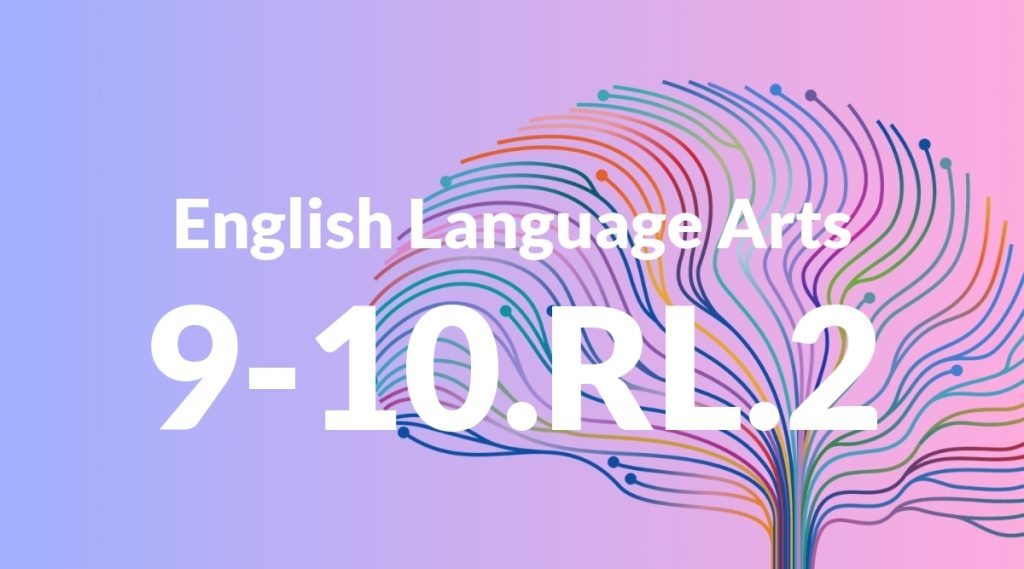Standard: 9-10.RL.2 – Determine a theme or central idea of a text and analyze in detail its development over the course of the text, including how it emerges and is shaped and refined by specific details; provide an objective summary of the text.
Grade level: Grade 9-10
Subject: English Language Arts
Domain: Reading: Literature
Teacher Overview
This standard focuses on students’ ability to determine the theme or central idea of a text and analyze its development over time. It’s crucial because it enhances critical thinking and comprehension skills, allowing students to engage deeply with literature. Students should be able to identify themes in simpler texts and summarize texts objectively. They should also recognize specific details that contribute to theme development.
Students will be able to apply their understanding of theme development to more complex texts and compare themes across different texts and media.
Common Misconception 1
A common misconception is that a theme is just a single word. This is incorrect because a theme is a complete idea or message about life or human nature, not just a topic.
Intervention 1
Use examples from well-known stories to illustrate how themes are more complex than single words. Discuss how themes are complete ideas that can be expressed in full sentences.
Common Misconception 2
Another misconception is that all details in a text are equally important for theme development. This is incorrect because only specific details contribute significantly to the theme.
Intervention 2
Guide students to focus on key details that contribute to the theme’s development by using graphic organizers or highlighting techniques.
Prerequisite Knowledge
Students should have a basic understanding of identifying themes and central ideas in simpler texts. They should also be familiar with summarizing texts objectively and recognizing specific details that contribute to the development of themes.
Subsequent Knowledge
After mastering this standard, students will be able to apply their understanding of theme development to more complex texts, including those from diverse cultures and historical periods. They will also be able to compare and contrast themes across different texts and media.
Instructional Activities
- Group discussions analyzing themes in selected novels
- Individual essays on theme development in short stories
- Class debates on the central ideas in historical texts
- Creative projects illustrating themes in poetry
- Interactive activities using graphic organizers to map theme development




